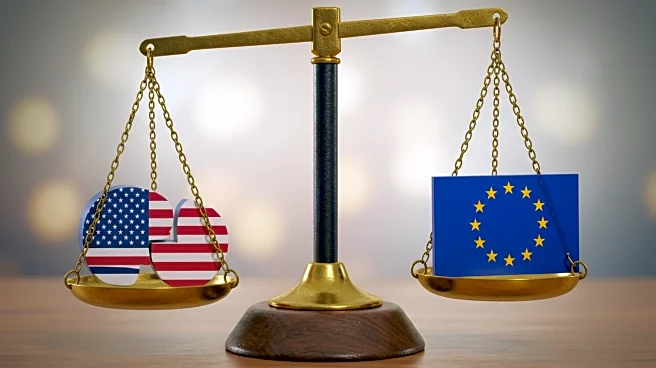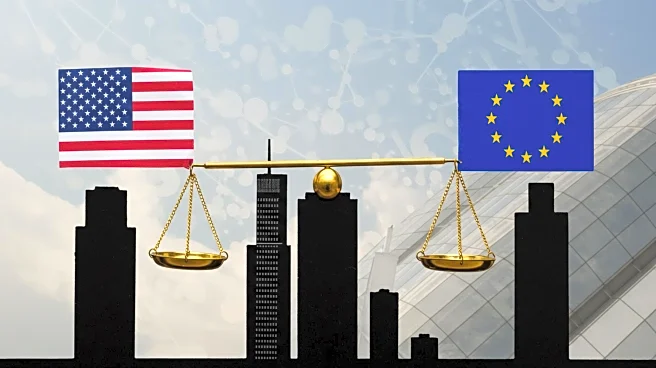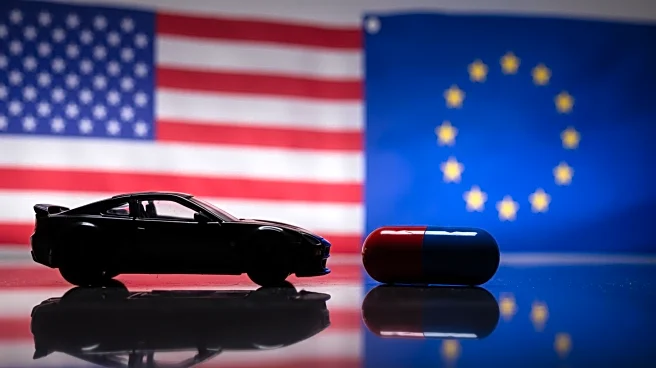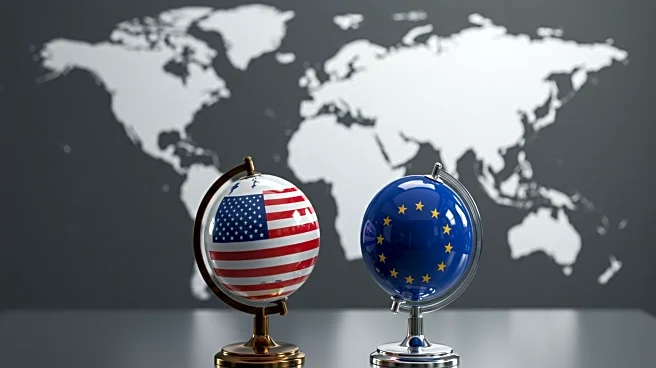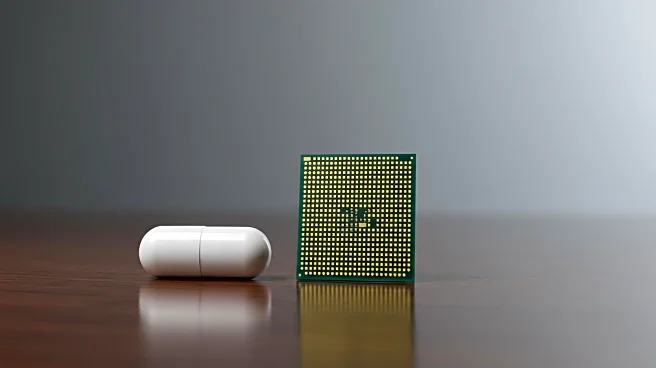What's Happening?
The United States and the European Union have finalized the details of a significant trade deal, which was initially announced as a preliminary agreement last month. The finalized deal maintains a 15 percent tariff on most goods imported from the EU, including pharmaceuticals, which are Europe's top export to the U.S. This comes amid expectations of the U.S. imposing higher tariffs on foreign-made medicines, potentially reaching 200 percent. The agreement also addresses tariffs on European vehicles, which will remain high until the EU enacts legislation to reduce tariffs on various U.S. products. European automakers have been facing challenges due to the current U.S. tariff rate of 27.5 percent. The finalized terms were released in a joint statement, providing businesses in the EU with a sense of stability and predictability.
Why It's Important?
This trade deal is crucial as it averts a potential trade war between two of the world's largest economies, the U.S. and the EU. By finalizing the agreement, both parties aim to stabilize trade relations and provide certainty to businesses affected by tariffs. The pharmaceutical and automotive industries, in particular, are significantly impacted by these tariffs. For the EU, maintaining a 15 percent tariff on pharmaceuticals ensures continued access to the U.S. market, albeit at a cost. Meanwhile, the automotive sector faces ongoing challenges due to high U.S. tariffs, which could affect European car manufacturers' competitiveness. The deal's finalization is seen as a relief for businesses, as it reduces the risk of further disruptions in transatlantic trade.
What's Next?
The next steps involve the EU working on legislation to lower tariffs on U.S. products, which could lead to a reduction in U.S. tariffs on European vehicles. This legislative process will be closely monitored by stakeholders in both regions, as it could significantly impact trade dynamics. Additionally, businesses will be assessing the long-term implications of the deal on their operations and supply chains. Political leaders in the U.S. and EU may also face pressure from domestic industries to negotiate further adjustments to the agreement to better align with their interests.
